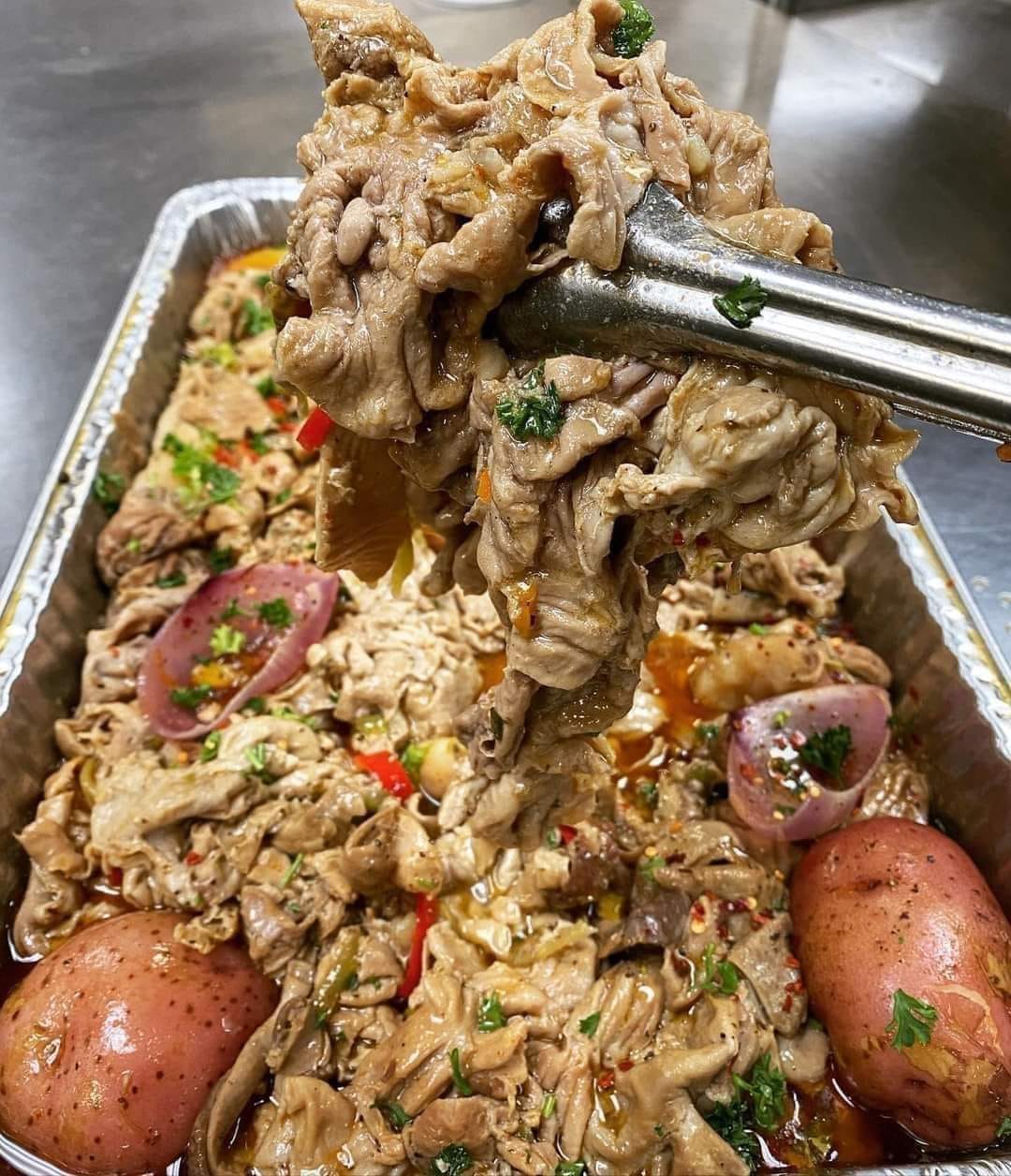Step 1: Cleaning the Chitterlings
- Wear Gloves: Start by wearing rubber gloves to protect your hands during the cleaning process.
- Rinse and Soak: Rinse the chitterlings thoroughly under cold running water. Soak them in a large bowl or sink filled with cold water and 1/4 cup of white vinegar for about 30 minutes. This helps to remove any impurities.
- Remove Fat and Debris: After soaking, carefully remove any excess fat and debris from the chitterlings. This step is crucial for ensuring the chitterlings are clean and safe to eat.
- Repeat Washing: Rinse and repeat the cleaning process several times until the water runs clear and the chitterlings are thoroughly cleaned.
Step 2: Preparing to Cook
- Cut Chitterlings: Once cleaned, cut the chitterlings into manageable pieces, typically about 1-2 inches in length.
- Boil Water: In a large pot, bring a generous amount of water to a boil.
Step 3: Cooking the Chitterlings
- Add Chitterlings to Pot: Add the cleaned chitterlings to the boiling water along with chopped onions, minced garlic, salt, black pepper, and bay leaves.
- Simmer: Reduce the heat to low and let the chitterlings simmer for about 2-3 hours, or until they are tender. Be sure to check the water level periodically and add more if necessary to prevent the chitterlings from drying out.
- Skim Foam: As the chitterlings cook, skim off any foam that rises to the surface.
Step 4: Seasoning
- Taste and Adjust: Near the end of the cooking time, taste the broth and adjust the seasoning as needed. Some people like to add hot sauce or a splash of vinegar for extra flavor.
Step 5: Serving
- Serve Hot: Once the chitterlings are tender and flavorful, remove them from the heat. Serve hot with your choice of sides, such as collard greens, cornbread, or potatoes.
Additional Tips:
- Safety First: Ensure your kitchen is well-ventilated during the cleaning and cooking process, as chitterlings can have a strong odor.
- Health Considerations: Chitterlings should be cooked thoroughly to avoid the risk of bacterial infections, such as Yersinia enterocolitica.
- Storage: If you have leftovers, they can be stored in the refrigerator for up to 3 days or frozen for longer storage.
Enjoying chitterlings is a culinary experience that connects to a rich cultural history. With careful preparation and patience, you can create a delicious dish that honors this tradition.
